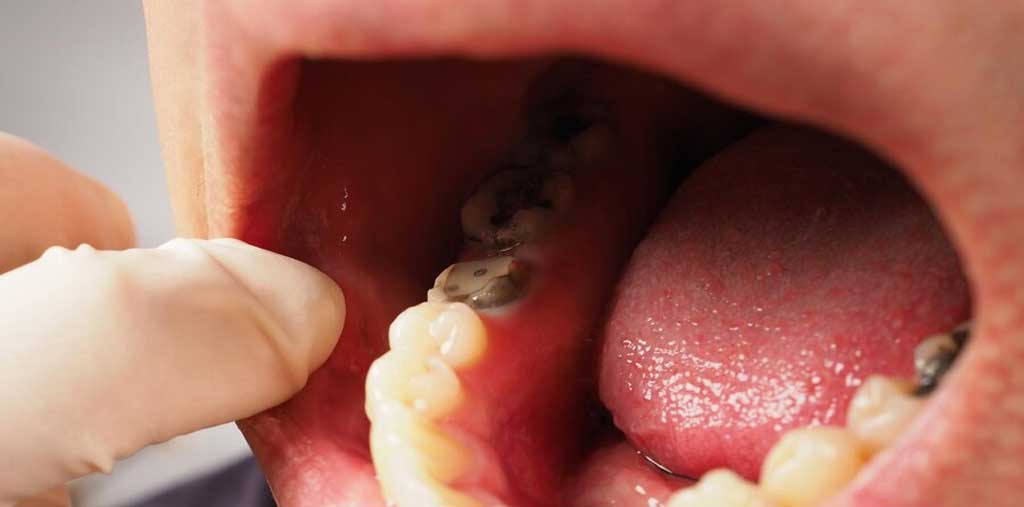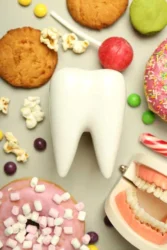Parents need to start to care for their child’s teeth as soon as they appear to avoid dental caries (cavities). Kids are more susceptible to developing cavities because baby teeth have more delicate enamel. While you may not see this as a big deal since they’ll lose their baby teeth to adult ones in a few years, it is advisable to do quite the opposite since baby teeth perform vital roles in a child’s formative years and even in years to come.
Why You Should Pay Attention to Your Child’s Dental Health
Baby teeth are more than just stand-in teeth for permanent teeth. Lack of proper care for them can lead to cavities, speech disorders, poor nutrition, and crooked or crowded teeth.
- Help the kids chew and eat healthily. If their teeth aren’t in good shape, they might be unable to eat crunchy foods like carrots which may affect their nutrition.
- Kids with healthy teeth are confident. They can make friends and interact with them freely, helping them develop good social relationships from a young age.
- A child growing up with missing teeth may render them unable to pronounce some words, and if you don’t take proper actions like therapy, they might develop a speech disorder.
- Your kid losing their baby teeth before it’s the right time for the permanent ones can make them have crooked and crowded teeth. It is because other teeth will emerge after the loss, taking up the space for the permanent teeth.
Why Your Child May Need Sealants or Fillings
Sealants and fillings are dental procedures to protect the teeth. However, they perform a sort of before and after effect. Sealants inhibit cavities from developing, while fillings restore a tooth.
Sealants
Sealants are plastic films applied to the biting surface of the rear teeth to prevent deterioration. They fit into the tooth’s groove as a protective coating. The main reason for sealants is to barricade the vulnerable area of a tooth from cavity-causing materials.
The molars and premolars are vulnerable to deterioration because regardless of how well your child practices oral care, it is hard to get rid of plaque (an acidic substance that destroys the enamel) due to the form of these teeth on them. So, sealants provide additional protection from cavities and can last for many years, up to a decade. Your dentist can easily restore sealants if they suffer damage.
Candidates for Dental Sealants
Since dental sealants usually perform preventive functions, they are best for kids and teens before they develop a cavity. If your child has depression in their baby teeth, it is also advisable to get sealants because decay in baby teeth is something to avoid. Generally, children are more susceptible to developing cavities in the depressions of their rear teeth, especially between the ages of 6-14. Applying sealants to their teeth as soon as they emerge is advisable.
Sealants are great for protecting your child from cavities, but the truth is that not every child needs them. Certain factors hint at whether they’ll need it or not. Some of these factors include if they have narrow fissures, decay in their baby teeth, signs of deterioration in their permanent molar, and the kind of things they eat.
Although it is rare to see adults get sealants, they can if they have not undergone any dental treatment such as fillings. Sealants mainly work to prevent cavities, but in some instances, they are used to seal minor holes. If a sealant is applied expertly, it can suffocate the bacteria causing the cavity.
Types of Dental Sealants
- Glass ionomer. This sealant is a malleable mixture applied to a tooth and releases fluoride over time.
- Composite resin. Composite resin seals a fissure and has no additional perks. Perhaps, a perk could be its tooth-like color.
Procedure
- First, the dentist cleans the chewing surface in preparation for the sealant
- Further cleaning is done on the tooth, and then dried
- An acidic chemical is put on the surface to make it coarse and ready for the sealants to stick.
- Finally, the sealant is applied and left to harden.
Fillings
Dental fillings are materials used to restore the structure of teeth that an injury or cavity has jeopardized. For cavities, the dentist takes out the decayed part of the tooth, and the filling, which may be of a single material like gold, or a variety of materials like composite resin, is installed.
Different dental fillings, including composite, porcelain, gold, silver, and acrylic, vary based on their materials. Their variation affects their aesthetics, cost, suitable location, and price.
Candidates for Dental Fillings
Dental fillings are similarly referred to as dental restoration, which means that there is something to fix. The only sure way to know if your kid needs dental fillings is by seeing a dentist. They can tell if your child is a candidate by examining their teeth and sometimes conducting an x-ray.
However, candidates for fillings usually suffer from damage to a tooth’s surface, cavity, or decay. They experience symptoms such as toothache and tooth hypersensitivity.
Types of dental fillings
- Composite fillings. This filling comes in a tooth’s color and is perfect for minor cavities.
- Ceramic fillings. A ceramic filling can be pretty costly. However, it fits in with the teeth and is quite durable.
- Glass ionomer. Glass ionomer filling lasts for about half a decade. It also releases fluoride, which is effective against cavities.
- silver amalgam. Silver amalgam is pretty sturdy and is usually used to fill the molars and premolars.
Procedure
- Application of local anesthesia to desensitize the area.
- The neighboring areas are prepared, and the decayed part is removed using a drill or laser.
- The area is cleaned with an acidic gel to get rid of any bacteria
- The affected tooth is isolated, and the filling is used to fill the hole
- The tooth is polished
- After-care involves adequate oral care and using fluoride.
Conclusion
Ensuring your kid makes regular visits to the dentist is crucial. It makes it easy to notice signs of decay and prevent them. However, depending on the gravity of your child’s dental problem, the dentist will go for better treatment.







